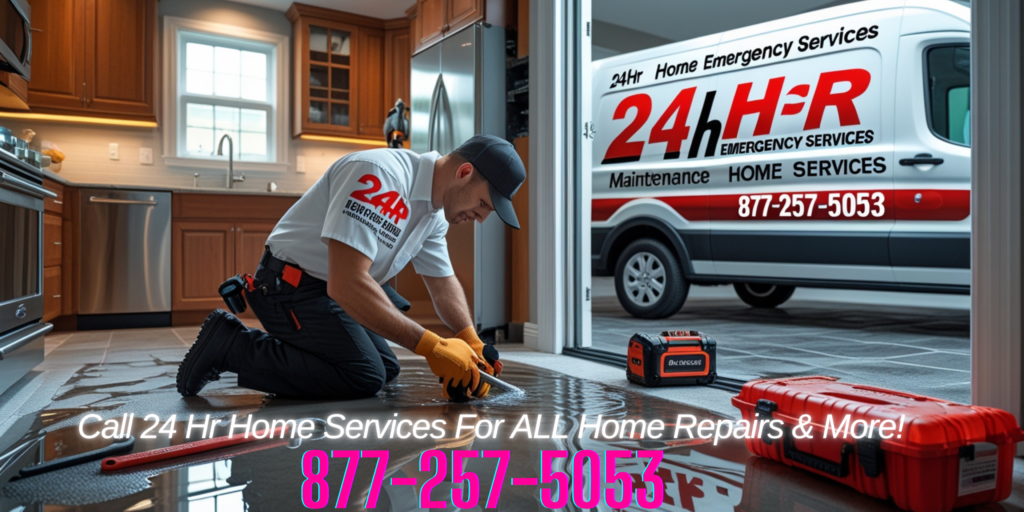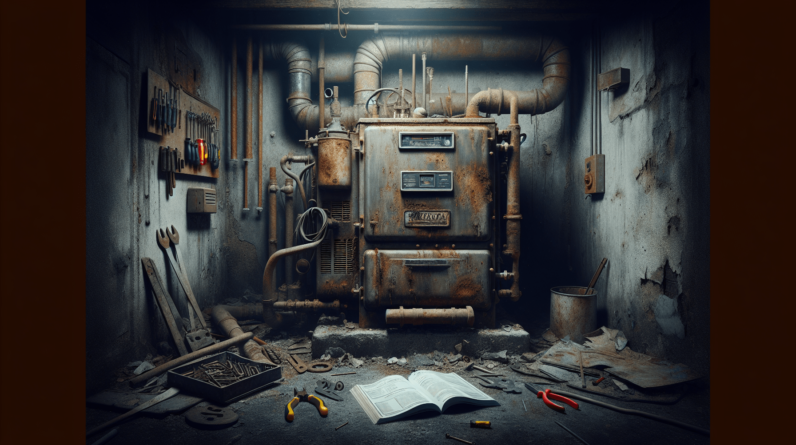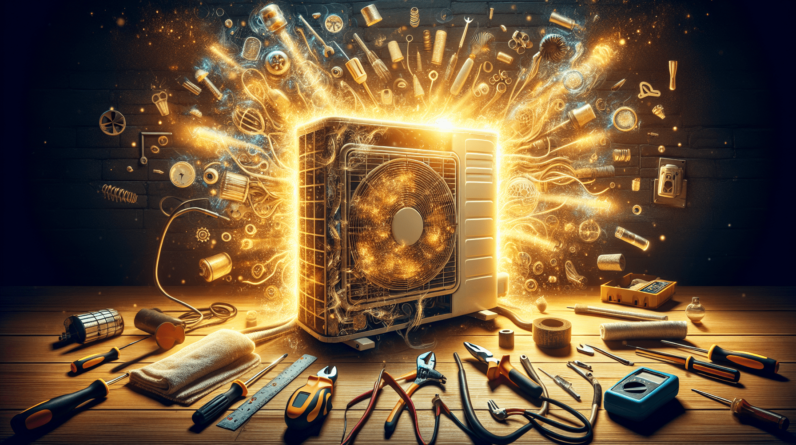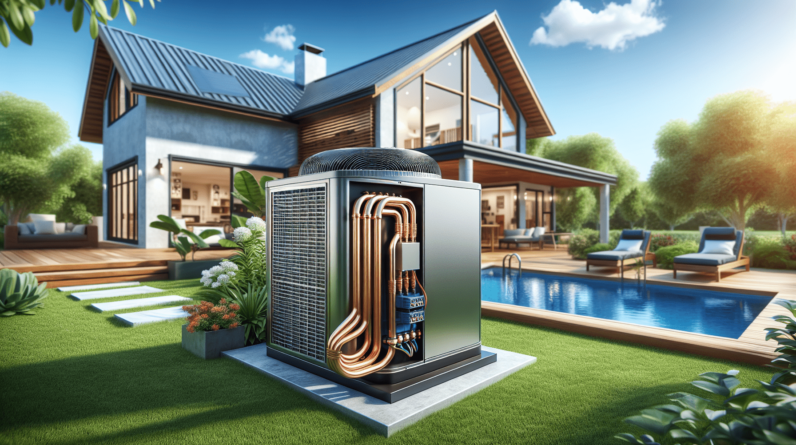
Imagine waking up one morning to the sound of dripping water. As you rush to investigate, you discover a small puddle forming on your floor beneath a leaky roof. In that moment, you wonder: how long has this been going on? How much damage could this have already caused? In this article, we will explore the timeline and potential consequences of a roof leak to help you understand the urgency of addressing this issue. From the initial signs to the possible long-term effects, we will guide you through the impact a roof leak can have on your home. So grab a cup of coffee, sit back, and let’s shine some light on this common homeowner’s dilemma.
Roof Leak Detection
Identifying the Signs of a Roof Leak
Detecting a roof leak early is crucial in preventing significant damage to your home. By knowing the signs to look for, you can take prompt action to address the issue. Some common signs of a roof leak include water stains on ceilings or walls, discoloration, and the presence of mold or mildew. You may also notice a musty odor or hear dripping sounds coming from the attic. It’s important to regularly inspect your roof for any signs of damage or leaks to catch them early on.
Importance of Timely Roof Leak Detection
Timely detection of a roof leak is essential to avoid costly repairs and extensive damage to your home. Ignoring a leak can lead to severe consequences such as structural damage, electrical hazards, and health risks associated with mold growth. Taking immediate action at the first sign of a leak can help prevent further deterioration, protect your belongings, and maintain the integrity of your home.
Factors Affecting Roof Leak Damage
Extent of the Leak
The extent of a roof leak refers to the size and severity of the water intrusion. A small leak may only cause minimal damage initially, but if left untreated, it can worsen and result in more significant issues such as weakened roof structure or mold growth.
Duration of the Leak
The length of time a roof leak persists can greatly impact the damage it causes. Even a small leak, if left unaddressed over an extended period, can lead to extensive damage to the roofing materials, insulation, and even the interior of your home.
Type of Roofing Material
Different types of roofing materials react differently to water intrusion. Some materials, such as asphalt shingles, are more susceptible to damage from leaks. Others, like metal or tile, may be more resistant but still require prompt repair to prevent long-term damage.
Weather Conditions
Weather conditions play a significant role in the potential damage caused by a roof leak. Heavy rain, snow, or wind can exacerbate the leak and accelerate the deterioration process. The severity and longevity of a weather event can influence the extent of damage caused by a leak.
Immediate Consequences of a Roof Leak
Water Stains and Discoloration
Water stains on ceilings and walls are often the first visible signs of a roof leak. These stains can be unsightly and may require extensive repairs to restore the affected areas to their original state. Discoloration can also indicate the presence of moisture, which can lead to mold growth if not addressed promptly.
Mold Growth
One of the most significant immediate consequences of a roof leak is mold growth. Mold thrives in moist environments, and a leak provides the perfect breeding ground. Once mold begins to grow, it can spread rapidly, causing not only structural damage but also potential health risks for you and your family.
Structural Damage
Continuous exposure to water can compromise the structural integrity of your home. Ceiling joists, rafters, and wall framing can become weakened over time, leading to sagging ceilings, cracked walls, or even collapse in severe cases. Timely roof leak detection and repair are essential to prevent structural damage.
Electrical Hazards
Water and electricity do not mix well. A roof leak can lead to electrical hazards if the water comes into contact with electrical wiring or fixtures. This poses a significant risk of shocks, short circuits, or even fires. It is crucial to turn off the power to affected areas and seek professional assistance to mitigate these hazards.
Short-Term Damage
Deterioration of Roofing Materials
Continuous exposure to water can cause roofing materials to deteriorate, especially if the leak persists for an extended period. Shingles may curl, warp, or become dislodged, compromising their ability to effectively protect your home from the elements. Swift repair of the leak is necessary to prevent further deterioration.
Growth of Rot and Decay
Water intrusion can lead to the growth of rot and decay in the various components of your roof, such as the decking, trusses, or sheathing. This can weaken the overall structure and require costly repairs or even replacement if left unaddressed.
Damage to Insulation
Insulation plays a crucial role in maintaining energy efficiency and comfort in your home. A roof leak can saturate the insulation, rendering it ineffective and waterlogged. Wet insulation loses its insulating properties and may require replacement to restore proper energy efficiency.
Ceiling and Wall Damage
Water that enters your home through a roof leak can damage ceilings and walls, leading to costly repairs. Staining, cracking, peeling paint, or bubbling wallpaper are common signs of water damage. Addressing the leak promptly can help minimize the damage to these interior surfaces.
Long-Term Damage
Weakening of the Roof Structure
A roof leak, if left undetected and untreated, can gradually weaken the entire roof structure. The constant presence of water can cause rot and decay, compromising the stability of the roof and putting your home at risk. Regular inspections and timely repairs are crucial for preventing long-term damage to the roof structure.
Compromised Integrity of the Building
A leaky roof can compromise the overall integrity of your home. Beyond just the roof structure, water intrusion can damage walls, ceilings, and even the foundation. This can significantly impact the value of your property and require extensive repairs to restore its integrity.
Health Risks Associated with Mold
Mold growth resulting from a roof leak can pose severe health risks to you and your family. Exposure to mold spores can cause respiratory issues, allergies, and other health problems. Prompt remediation of the mold and addressing the roof leak are essential for maintaining a healthy indoor environment.
Higher Repair Costs
Ignoring a roof leak can lead to higher repair costs in the long run. What could have been a small, localized repair can escalate into a full roof replacement if the damage becomes extensive. By addressing the leak as soon as possible, you can avoid costly repairs and save money in the long term.

Preventive Measures
Regular Roof Inspections
Regular roof inspections, at least once a year, can help identify potential issues and catch roof leaks early on. Engaging a professional roofer to assess the condition of your roof can provide peace of mind and help prevent significant damage.
Prompt Repair of Small Issues
Addressing small issues promptly can prevent them from turning into major problems. If you notice cracked or missing shingles, damaged flashing, or any other signs of damage, it’s essential to have them repaired immediately to maintain the integrity of your roof and prevent leaks.
Maintenance of Gutters and Downspouts
Proper maintenance of your gutters and downspouts is crucial in preventing roof leaks. Clearing debris, checking for clogs, and ensuring proper drainage are essential to avoid water overflow, which can seep into your home and cause leaks.
Proper Ventilation and Insulation
Providing adequate ventilation and insulation in your attic can prevent moisture buildup and reduce the risk of roof leaks. Proper airflow helps to prevent condensation, which can lead to mold growth and roof damage. Insulation also acts as a barrier, helping to maintain a stable indoor temperature and protect against leaks caused by ice dams or severe weather conditions.
Immediate Steps to Mitigate Damage
Identifying the Source of the Leak
When faced with a roof leak, it’s crucial to identify the source accurately. Water stains or drips inside your home can sometimes be misleading, so it’s necessary to trace the water back to its origin on the roof. This will help you address the leak more effectively.
Temporarily Patching the Leak
In emergency situations, it may be necessary to temporarily patch the leak until professional repairs can be made. This can involve using materials such as roofing cement, tarps, or roof sealant to cover the damaged area and prevent further water intrusion. It is important to note that temporary patches are not a permanent solution and should be followed up with professional repairs.
Removing Excess Water
If water has accumulated inside your home due to a roof leak, it’s essential to remove it promptly. Using buckets, towels, or a wet-dry vacuum, you can remove standing water to prevent further damage to your belongings and minimize the risk of mold growth.
Drying and Dehumidifying
After removing excess water, it’s crucial to thoroughly dry the affected areas to prevent further damage and inhibit mold growth. Using fans, dehumidifiers, and proper ventilation can help expedite the drying process and reduce moisture levels in your home.
Professional Roof Leak Repair
Hiring a Licensed and Insured Roofer
When it comes to repairing a roof leak, it’s essential to hire a licensed and insured roofer. A professional with proper credentials will have the knowledge and experience to accurately diagnose the issue and provide effective repairs, ensuring the long-term integrity of your roof.
Assessment and Diagnosis
A licensed roofer will conduct a thorough assessment of your roof to identify the source of the leak and assess any potential damage. Accurate diagnosis is crucial in determining the appropriate repair approach and preventing future leaks.
Timely and Efficient Repair
Once the source of the leak has been identified, a skilled roofer will promptly and efficiently repair the damaged area. This may involve replacing damaged shingles, repairing flashing, or sealing gaps and cracks to ensure a watertight seal. Timely and efficient repair is essential in preventing further damage and ensuring the long-term stability of your roof.
Preventive Measures for Future Leaks
In addition to addressing the current roof leak, a professional roofer can provide guidance on preventive measures to minimize the likelihood of future leaks. This may include recommendations for improved drainage, regular maintenance, or the installation of additional protective layers.
Insurance Coverage for Roof Leak Damage
Reviewing Homeowner’s Insurance Policy
When dealing with roof leak damage, it’s important to review your homeowner’s insurance policy to understand the coverage and limitations. Some policies may cover the cost of repairs or damage caused by the leak, while others may have exclusions or specific requirements. Familiarize yourself with your policy and speak with your insurance provider if you have any questions or need clarification.
Applying for a Claim
If your insurance policy covers roof leak damage, you may need to file a claim to receive reimbursement or coverage for repairs. Be sure to document the damage thoroughly, including photographs and written descriptions, and provide all necessary documentation when filing your claim.
Documenting the Damage
Proper documentation is crucial when filing an insurance claim for roof leak damage. Take photographs of the affected areas, including both the interior and exterior of your home. Keep records of any repair estimates, invoices, or receipts related to the leak and subsequent repairs.
Working with Adjusters and Contractors
In some cases, an insurance adjuster may need to assess the damage to determine the extent of coverage. It’s important to be present during the inspection to ensure all damage is properly documented. Additionally, coordinate with your chosen roofing contractor to provide any necessary information or documentation to facilitate the repair process.
Conclusion
Addressing roof leaks promptly is crucial to prevent significant damage to your home. By identifying the signs of a roof leak and understanding the immediate and long-term consequences, you can take proactive steps to safeguard your property. Regular inspections, prompt repairs of small issues, proper maintenance, and working with professional roofers are essential in preventing leaks and minimizing potential damage. Finally, reviewing your homeowner’s insurance policy and documenting any damage can help ensure appropriate coverage and mitigate the financial burden of repairs. Remember, taking prompt action and being proactive in maintaining your roof will help protect your home and prevent costly damage.






